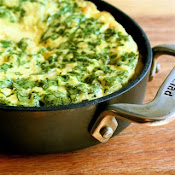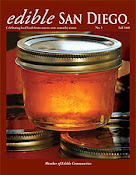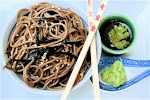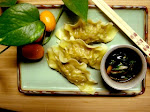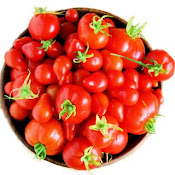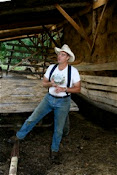 I have to admit I am very excited to say I have finally visited Polyface Farm in Swoope, VA. Not only did I get to hear the charismatic Joel Salatin describe his innovative farming techniques for nearly three hours, I got to stand in the barn where Michael Pollan had his epiphany during his week-long stay at Polyface.
I have to admit I am very excited to say I have finally visited Polyface Farm in Swoope, VA. Not only did I get to hear the charismatic Joel Salatin describe his innovative farming techniques for nearly three hours, I got to stand in the barn where Michael Pollan had his epiphany during his week-long stay at Polyface. In the picture above, Joel Salatin stands in the open-sided shelter where his cows spends a portion of the winter. During the winter, the cows eat hay (dried grass accumulated throughout the growing season), and live on a bedding consisting of woodchips, sawdust and old hay to absorb the cows' excrement. When the heavy cows tread on their nitrogen-rich manure and on the carbon-rich bedding, packing it together, they allow the mixture to ferment (anaerobic composting). By adding corn to the bedding, Salatin entices his pigs to turn the bedding into compost: When the cows return to pasture in March, the pigs dig through the densely packed bedding, searching for the tasty fermented corn, aerating the pile and turning it into compost for the spring.
Here, in this barn, Salatin says Pollan realized how Polyface contrasts so sharply with conventional farms.
Salatin considers himself a grass farmer: a farmer who relies on the free energy of the sun to grow grass and in turn feed animals, ultimately enabling all parties involved — animal, land and man — to prosper. For example, through controlled grazing, Salatin allows his ruminants to spread and fertilize grass seed, creating a healthier and more productive land, which in turn produces healthier and more productive cows, and in the end provides him with more meat.
But at Polyface, that's just the beginning. With inventions such as the Eggmobile, Gobbledygo, and Raken house, everything is connected. The grass, after grazed by the cows and sanitized by the chickens, will grow back thicker and healthier. The grass doesn’t need fertilizer to grow because the cows spread and fertilize the seed with their manure; the cows don’t need grain — a food their ruminant stomachs can’t digest without the help of antibiotics — because they have grass; the laying hens require little purchased feed, because they dine not only on grass, but also on fly larvae and insects in the cow’s manure; the land doesn’t need pesticides to protect against pathogens because the hens thoroughly sanitize any land the cows have grazed; and the land furthermore doesn’t need artificial fertilizers because the hens fertilize it with their nitrogen-rich manure.
By relying on the sun, Salatin needs little oil and purchased food to grow his healthy, tasty, pastured meats — not only a wise business move, but also a boon to the environment.
After reading Pollan's The Omnivore's Dilemma in March, Ben and I have been dying to visit Polyface. To say the least, the weekend was memorable. View all of the photos here, and many of the highlights below:
Ben loves the pigs, and the pigs love Ben.

Ben and I stand with Joel in the barn where Michael Pollan had his epiphany about Polyface Farm.

Pigs that Joel is "finishing" on acorns and other nuts from the forest.


Chickens in the "Raken" house.

Joel explains the chicken-cow symbiosis while his laying hens huddle around him.

Joel pulling a crate that houses his pastured chickens.

The pastured chickens move underneath the crate as Joel pulls it to a fresh patch of grass.

The eggmobile that houses the laying hens that follow the grass-fed cows.

The group of people we toured with for three hours walk with Joel towards the barn.

In the "Raken" house, Joel shows a baby rabbit to a girl.



